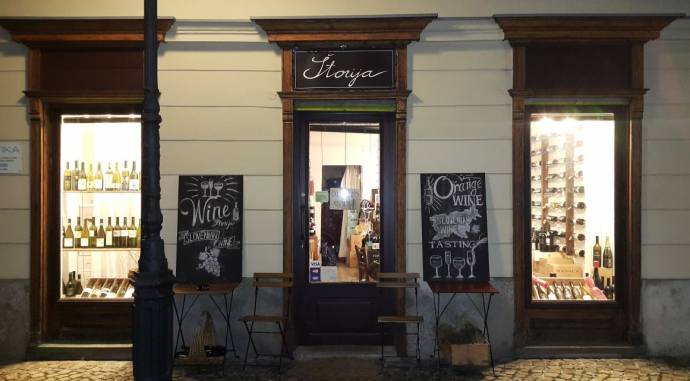January 28, 2018
Štorija, or Vinoteka Štorija, as it goes by its full name, is a small well-stocked wine store on Trubarjeva cesta in Ljubljana (see map below), which offers some of the best bottles from Slovenian wine producers that you probably won’t find in supermarkets, where more affordable wines from cooperatives are usually (but not always) sold.
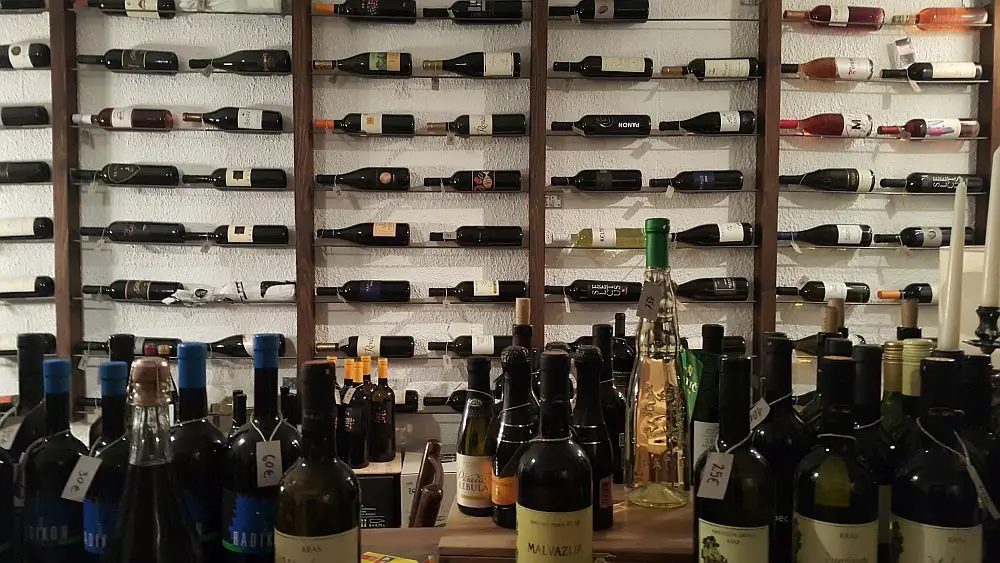
Inside Štorija
Speaking of affordable, what would be the normal per-bottle prices in Štorija, and what makes some bottles more expensive, or rather, of higher quality, than others?
All of this and more we found out on one of our visits to Štorija (a story in a Slovenian littoral dialect), a well-chosen name for the place run by David Šinigoj, a sommelier and cultural explorer, if we may call him so, always willing to share either his knowledge of viticulture in general, or the story behind each bottle and its producer in particular. In the following lines we shall therefore not remain within the narrow presentation of the store, but also write a little about what we have learned about wine on our visits.
David told us that the price range spans from about 10 to 180 EUR, with the average purchase settling at about 25 EUR per bottle. As there are not many bottles priced in the 20s, people must be mostly buying those in the tens or thirties of euros. However, suggested David, the best value purchases might in fact occur in the forty euro range (and perhaps higher, we might add), where the quality of wine is in fact comparable to that of more famous brands, with rising global demand having already pushed the prices of these into the hundreds of euros per bottle.
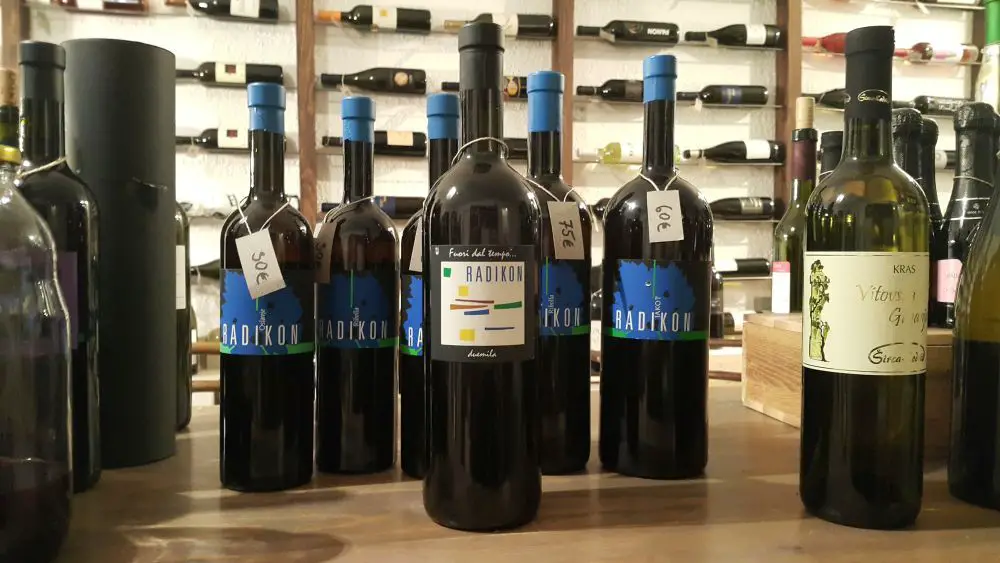
Besides the right weather and soil, the inputs of the winemaker’s skill and effort are important factors influencing a vintage, which is why history and tradition have always played such important roles when it comes to making brands in the wine industry.
After the Second World War, certain standards achieved by processes such as racking and sulphuring were introduced to wine production, which guaranteed safety with regard to the microbiological aspect of drinking wine. In Slovenia (as in the rest of Yugoslavia) these trends came together with a socialist type of economy which, in its goal of labour protection, introduced mechanisms of risk (and reward) diversification in the form of cooperatives. These would buy grapes from local viticulturists at stable prices, which in effect encouraged the production of quantity over quality and, more importantly, moved the production of wine from family wine cellars to the cooperative centres, which in effect brought about a decline in wine making skill across the general population of the wine growing regions.
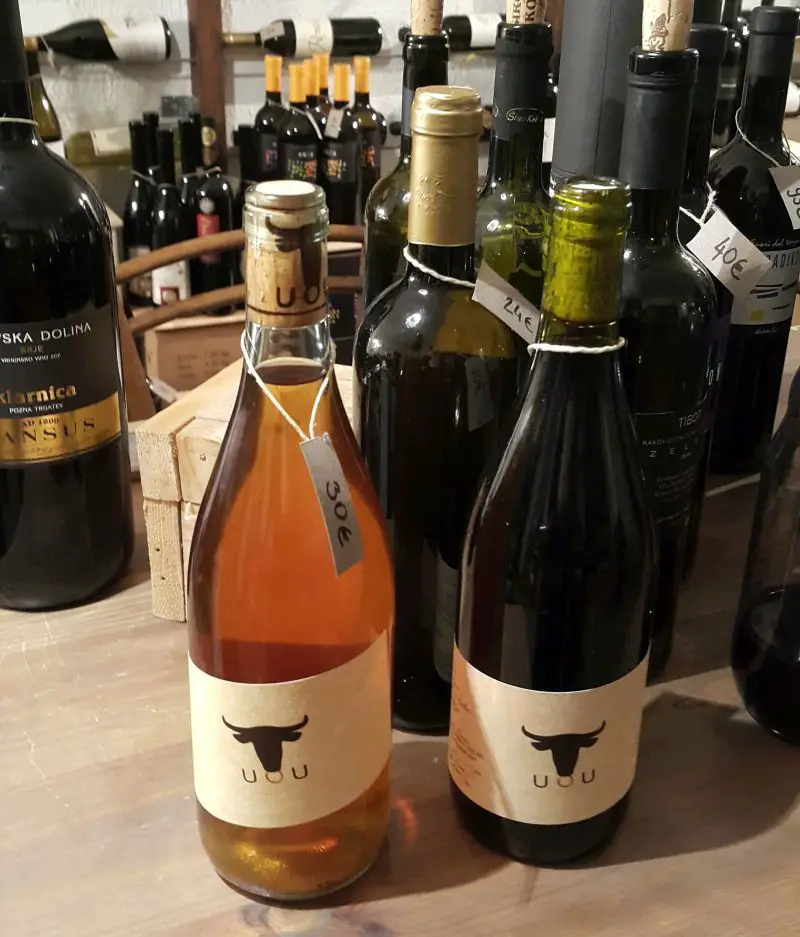
UOU, from pronounciation of vol - ox: premium wine sometimes originates from old vineyards of unknown vine varieties
After the next systemic change in the 1990s, when open markets called for a return to private production, certain practices with regard to winemaking, along with other market-related knowledge, such as branding and labelling, had to be re-learned. The proximity of the Italian border, and especially the connections between Slovenian wine producers living in both states (there is a significant autochthonous Slovenian minority living across the border in Italy), played an important role in this transition, which makes the wines from the Littoral still the most responsive to current trends in the winemaking business.
The owner of Štorija, David, experienced these changes first-hand while growing up in the region, and is therefore not just as a trained expert, but also, by the nature of his culture, very familiar with the produce he sells in his store. It is therefore not surprising that, although Štorija covers wines from all the Slovenian wine growing regions, it is those from the Littoral alongside the cross-border Slovenian brands that are represented best on his shelves.
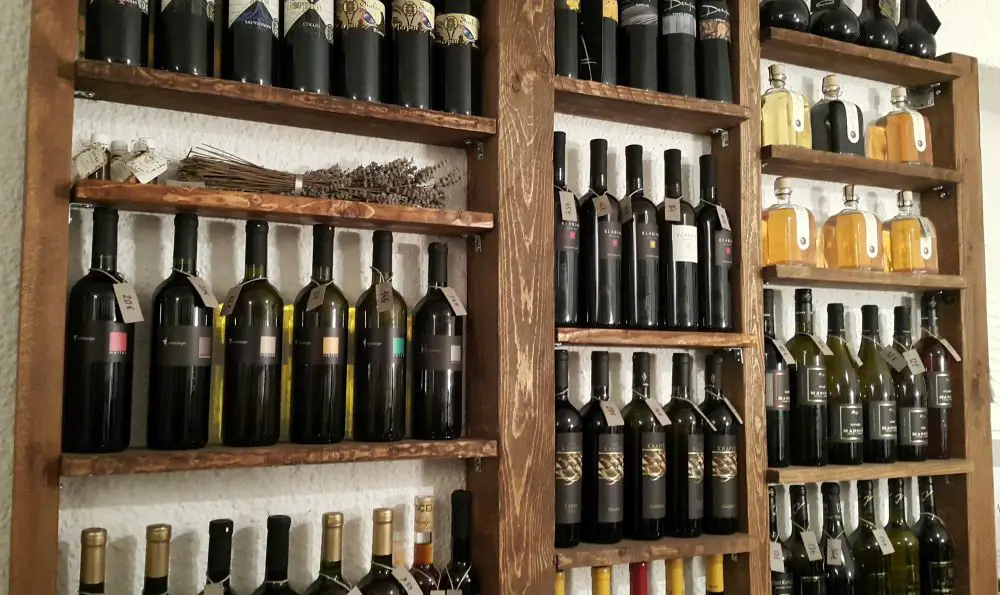
While choosing between the 11 EUR bottle of Vitanjska Grganja and the 16 EUR bottle of Klarnica, both from the Vipava Valley, we also learned that current winemaking trends are focused on so-called “natural” wines (i.e. those produced without any external help of added sugars, acids or whatever winemakers might want to add to achieve a more balanced glass) and orange wines.
What are orange wines? If we keep in mind that the colour (and flavours) of red wines are achieved by the use of red grapes that go through the maceration process (i.e. soaking), in which tannins and colouring agents are extracted from the grape skins and sometimes stems; white wines are produced from white grapes and without the process of maceration; while rosé is basically red grapes produced as white wine; then orange wine is the remaining possible combination of the two – that is, white grape varieties that go through a prolonged process of maceration.
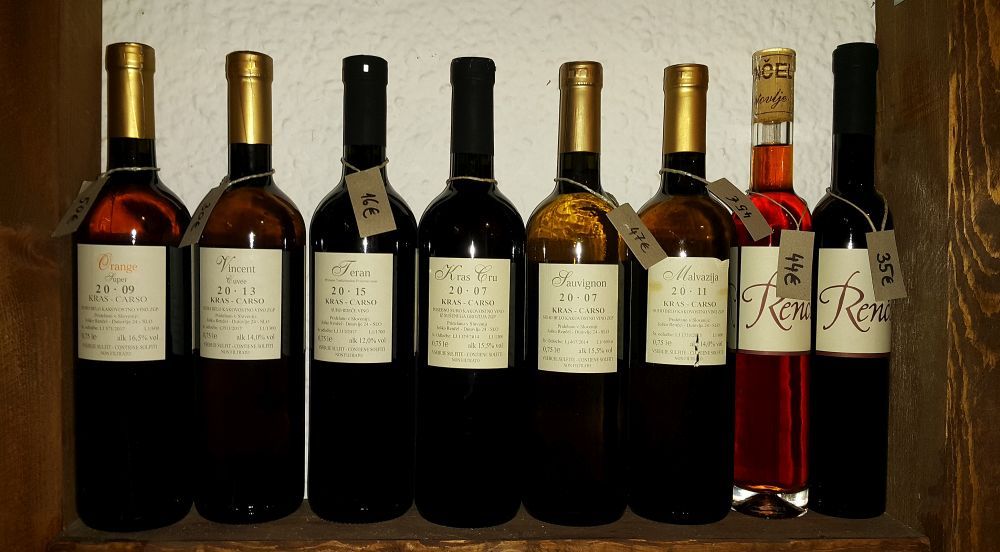
An example of orange wine on the left and two examples of sweet wines (made of dried grapes) on the right
And what is David’s wine of choice? He has been looking into “living” wines, lately, he said. Such wines come straight from the barrel, and not from a bottle, rather like food that comes to your plate straight from the garden. Back to the roots of our agrarian culture, so to speak.
However, as most of us aren’t blessed with a vineyard next door, or someone with the key to the cellar, we’re lucky there are still plenty of good bottles to choose from, at Štorija and elsewhere in Slovenia. Just make sure you open them properly, as David will show you in the video below (filmed by Terry Anzur). Na zdravje!

